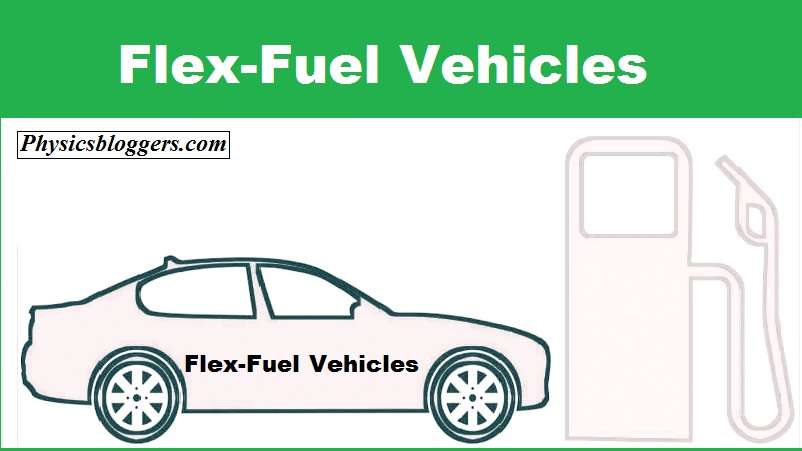Flex-fuel vehicles

Flex-fuel vehicles
Flex-fuel vehicles are cars intended to burn a combination of gas and elective fills like ethanol. These vehicles are otherwise called flex-fuel or adaptable fuel vehicles (FFVs). These vehicles work with motors that change the start and filling framework frameworks to oblige different fuel mixes with various ethanol content. Flex fuel vehicles have the capacity of gas working and a combination of ethanol and gas up to 83% with an ignition motor. These vehicles have the logo shown below

Benefits of Flex-fuel vehicles
Here are a few benefits of flex-fuel vehicles:
Motor Flexibility:
These vehicles can change fuel combination, fuel infusion, and start timing based on a particular combination of fuel. This adaptability permits the best productivity and execution for various fuel syntheses.
Fuel Accessibility:
Flex-fuel vehicles offer the decision of fuel, they can burn gas when ethanol isn’t free. Here, it is likewise critical that all fuel stations can’t offer E85 or different mixes of ethanol. So it may not be accessible in each locale.
Mileage:
Flex-fuel vehicles give somewhat low eco-friendliness when they burn ethanol contrasted with gas. Ethanol contains less energy per unit volume than gas, bringing about a lower energy thickness. Therefore, vehicles running on E85 might encounter diminished mileage per gallon contrasted with gas alone.
Flex-fuel vehicles are named with an image or a yellow gas hole. This helps proprietors and powering station orderlies recognize and separate them from regular gas vehicles.
Ethanol Advantages:
Ethanol is a locally created and sustainable fuel derived from corn or sugarcane. Its utilization in these vehicles can lessen reliance on non-renewable energy sources, as ethanol has a lower carbon content contrasted with fuel.
History of Flex-fuel vehicles
The idea of flex-fuel vehicles and the utilization of elective fills can be followed back to the mid-twentieth 100 years. The historical backdrop of flex-fuel vehicles is:
Substituting fuel was getting appealing during the 1900s when gas was contending with other fuel sources like steam and power. Henry Portage, the pioneer behind the Passage Engine Organization, explored different avenues regarding ethanol as a fuel for his Model T vehicles and accepted it very well may be a reasonable option in contrast to gas. During the 1970s, Flex-fuel vehicles in Brazil started a public ethanol program because of the oil emergency and the need to decrease reliance on imported oil. The Brazilian government advanced the utilization of ethanol produced using sugarcane as a fuel for vehicles.
After the 1970s and the beginning of the 1980s, the U.S. government sent off drives to advance the utilization of elective powers, including ethanol. During the 1990s, the U.S. Branch of Energy started the Perfect Urban Areas Program, which was expected to energize the utilization of elective fills and the improvement of the foundation for their dispersion. In the last part of the 1990s and mid-2000s, automakers began presenting flex-fuel vehicles in light of unofficial laws and developing interest in elective fills.
Flex-fuel vehicle creation and accessibility expanded all through the 2000s, and this further empowered the creation and reception of flex-fuel vehicles. So these vehicles have acquired prevalence in a few nations past Brazil and the US. Different nations, including Canada, Mexico, and Australia, likewise have flex-fuel vehicles on their streets, despite the fact that their reception rates fluctuate.
Exploration and headways in motor innovation and materials keep on working on the exhibition, proficiency, and similarity of vehicles with elective energizes.
Drawbacks of Flex-fuel vehicles
While flex-fuel vehicles enjoy their benefits, there are likewise a few drawbacks related to their utilization
Restricted Accessibility of Ethanol:
The accessibility of the fuel is reliant upon the district; the fuel may not be accessible in each locale. Ethanol has a lower energy content per unit volume contrasted with gas; this can bring about diminished efficiency.
Ethanol Creation and Natural Worries:
While ethanol is viewed as an inexhaustible fuel source, there are ecological worries related to its creation. Enormous scope ethanol creation frequently depends on rural harvests, This can prompt possible deforestation and living space misfortune.
Lower Energy Thickness:
Ethanol has a lower energy thickness contrasted with fuel. Thus, flex-fuel vehicles running on ethanol might have marginally decreased power results and speed increases when contrasted with gas vehicles.
Questionable Long Haul Future:
The eventual fate of elective powers, including ethanol, is liable to developing strategies, market influences, and mechanical progressions. As states and businesses investigate an extensive variety of environmentally friendly power sources, the drawn-out reasonability and importance of flex-fuel vehicles stay questionable.
These are a few disservices of flex-fuel vehicles, that might not be disregarded when we at any point utilize these vehicles. Accessibility, cost, creation, and sureness for the long haul are factors that are still in some way trying for this innovation.



